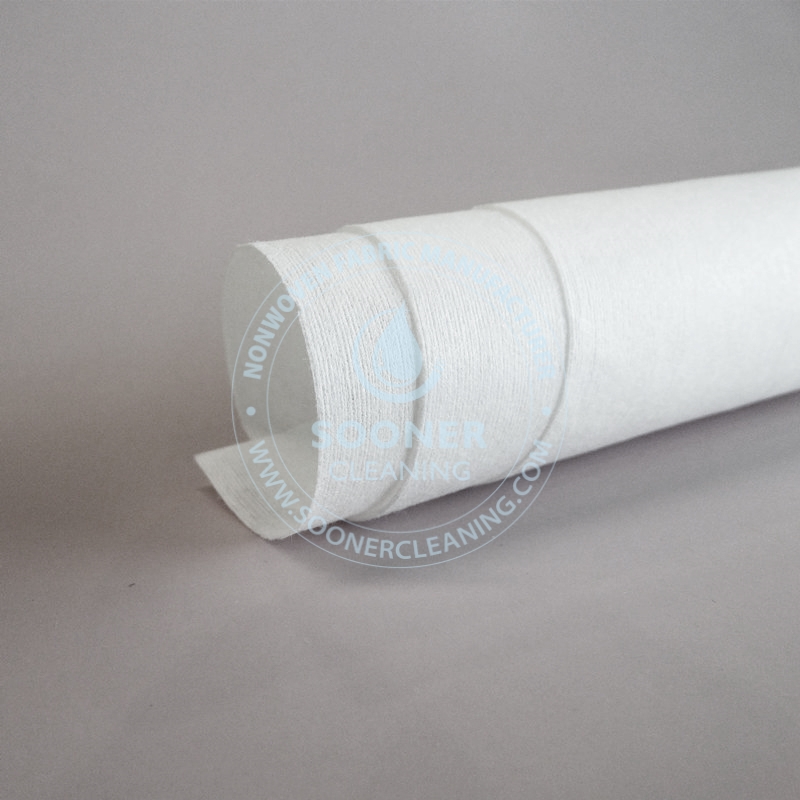1. What are flushable wipes fabrics?
Flushable wipes fabric is a special material designed for use in wipes products with biodegradable properties. It disperses and breaks down quickly in water without causing lasting pollution to the environment. The fabric consists mainly of natural and synthetic materials such as wood pulp, cellulose and Lycra. Through the unique production process and material proportioning, the wipes will not accumulate in water after use, thus helping to reduce the burden on the environment.
2. Production process: Wet papermaking wood pulp fabrics
The production process of this fabric adopts the wet papermaking technology, that is, by mixing wood pulp fibres with other ingredients (such as cellulose and Lycra), wetting and shaping them, and then drying them to form a fabric with a certain degree of strength and flexibility. This process ensures that the fabric has good dispersibility and comfort, while maintaining the appropriate wipes strength.
3. Main Ingredients
Wood Pulp: Wood pulp is a natural source of fibre which, after special treatment, enhances the strength and resilience of the fabric, helping to keep the wipes moist and ensuring durability during use.
Cellulose: Cellulose is a natural polysaccharide that comes mainly from plants. It is not only a component of wood pulp, but also has good biodegradability, which helps wipes break down quickly in water.
Lycra: Lycra is an elastic fibre that provides softness and ductility to the fabric, making the wipes more comfortable to use and easy to stretch and deform.
4. Fabric Specifications and Standards
Weight: Commonly available dispersible wipes fabrics are in the range of 50-80 grams per square metre. This allows the fabric to be strong enough to be used but soft enough to be comfortable and easy to handle.
Width: The width of the fabric is usually 325cm, making it suitable for mass production of wipes to meet a wide range of sizes and packaging requirements.
Weave: The fabric is usually woven in a plain weave, and common embossing patterns include Star Cloud and diamond patterns. These patterns not only enhance the appearance of the fabric but also the structural stability of the wipes.
5. International and national standards
In order to ensure the quality and dispersibility of wipes fabrics, standards have been set around the world:
European Standard GD4: According to the European standard, fabrics need to undergo a 60-minute test using a 12.5mm screen and the pass rate needs to be more than 60%.
American standard IWSFG: Under the American standard, fabrics need to undergo a 30-minute test with a 25mm mesh aperture, and the pass rate needs to be over 80%.
National Standard Dry Fabrics: According to the domestic standard, dry fabrics need to be tested at 26 rpm for 10 minutes with a pass rate of more than 90%.
Wet wipes standard: Wet wipes fabrics are required to be tested under wet conditions, using a 12.5mm screen, after 60 minutes of testing, and the pass rate needs to be more than 70%.
These standards ensure that the fabrics are able to break down effectively after use, avoiding impacts on the sewer and the environment.
6. Environmental benefits of flushable wipes fabrics
One of the greatest benefits of flushable wipe fabrics is their environmental friendliness. The material breaks down quickly in water after use and does not clog waterways or pollute the environment as traditional wipes do. As environmental awareness increases, many countries and regions are demanding more environmentally friendly wipes, making flushable wipes fabrics an increasingly popular choice in the marketplace.
7. Conclusion
As an environmentally friendly innovation, flushable wipes are gradually changing the way we perceive wipes. By using these fabrics, consumers can enjoy a convenient cleaning experience while contributing to the protection of the earth's environment. As technology continues to advance, the future of wipes will be more environmentally friendly, durable and comfortable, contributing to global environmental protection.


